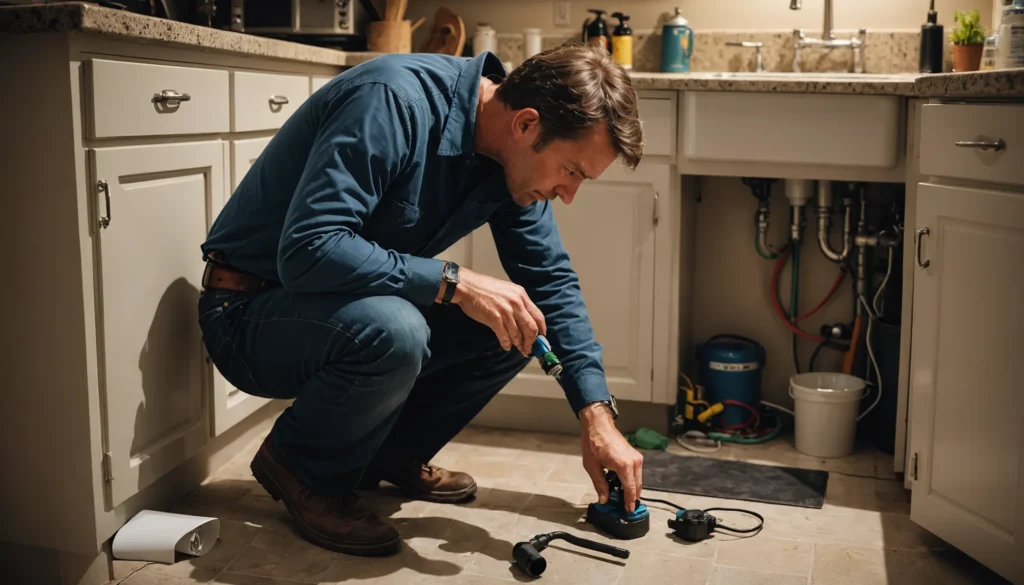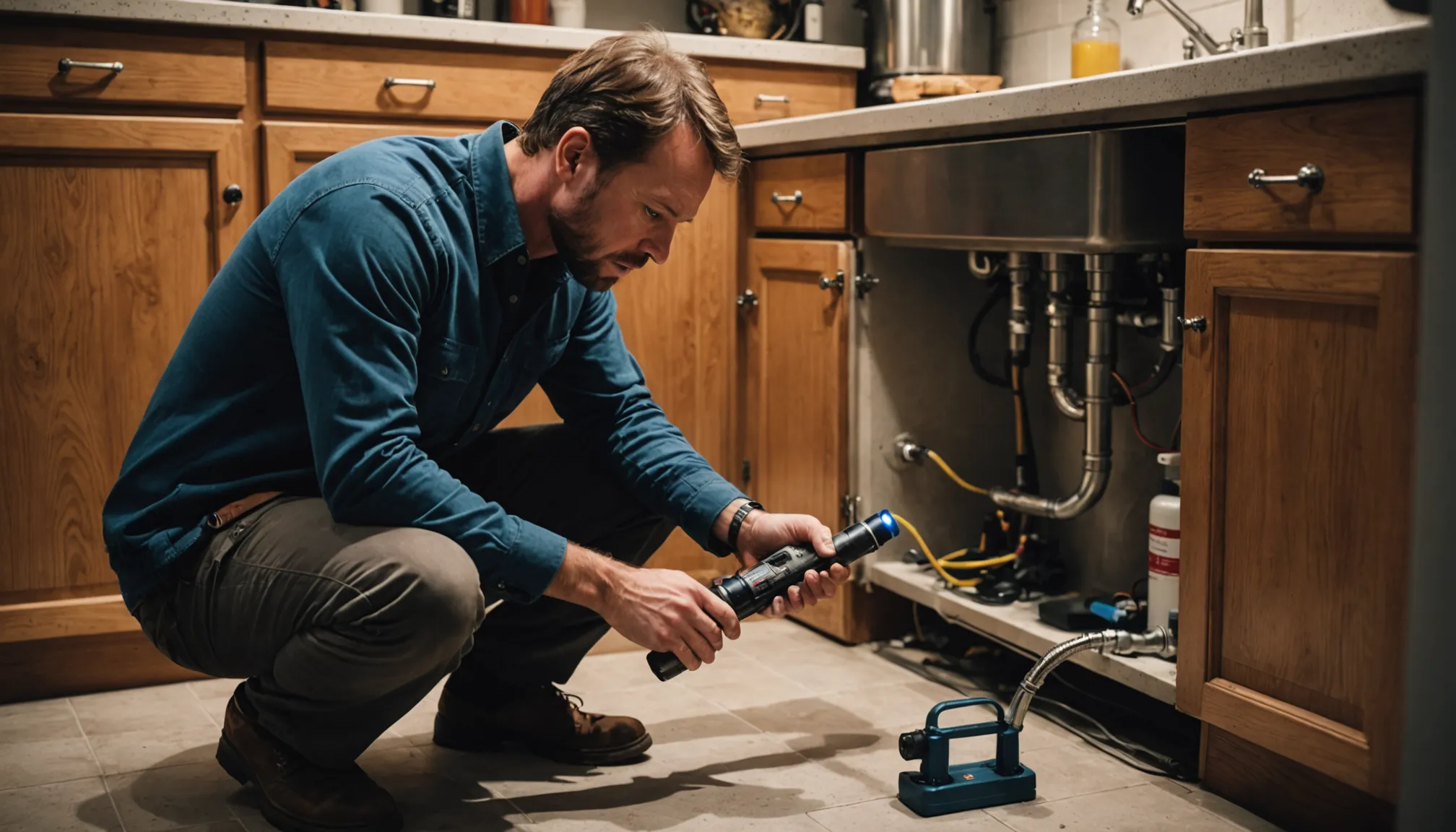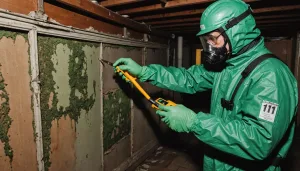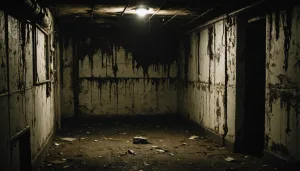In the face of plumbing emergencies, the first crucial step for any homeowner is to accurately identify the problem at hand. Quickly determining the cause of the issue can streamline the entire repair process and prevent further complications. Plumbing systems are intricate networks of pipes, fixtures, and valves, and understanding where the glitch occurs can make all the difference between a minor inconvenience and a major disaster.
One of the most effective homeowner tips is to stay calm and systematically approach the evaluation. Begin by examining common signs of plumbing issues, such as unusual noises, water leaks, or foul odors. These indicators can help isolate the problem area. For example, a dripping sound might suggest a leaky pipe, whereas a persistent running toilet may indicate a faulty flapper valve.
Where feasible, use the following checklist to aid in diagnosing the problem:
- Check for visible water leaks under sinks and around fixtures.
- Listen for any abnormal sounds, like hissing from pipes or gurgling in drains.
- Observe any drainage issues such as slow-moving water or backflow in sinks and tubs.
- Pay attention to water pressure changes that could indicate a larger blockage or leak.
- Look for water stains on walls and ceilings which may signify hidden leaks.
Another important aspect is to distinguish between urgent and non-urgent plumbing problems. Some issues require immediate attention, while others may be monitored until a professional arrives. Here’s a comparative table to help determine the urgency:
| Urgent Issues | Non-Urgent Issues |
| Major water leaks that risk flooding | Steady dripping from a faucet |
| Sewage backups in the home | Slightly slow drainage in sinks |
| Lack of access to clean water | Clogged but slow-flowing toilet |
By meticulously identifying the problem, you not only aid in the seamless transition from assessment to repair but also enhance communication with the plumber. Detailed information about symptoms and potential locations of the issue can significantly expedite the troubleshooting process. Knowing the nature of the plumbing issue prepares you to take appropriate measures to mitigate any damage before the professionals arrive. Remember, a well-informed homeowner is more equipped to handle emergencies effectively and ensure the longevity of their plumbing systems.
Shut off water supply
Once you have identified the problem with your plumbing, the next immediate action is to shut off the water supply. This critical step can prevent further damage to your home, such as flooding or water damage, while you wait for the plumber to arrive. Follow these steps to effectively shut off the water supply:
- Locate the Main Water Shut-Off Valve: As a homeowner, one of the best preventative tips is to familiarize yourself with the location of your main shut-off valve before an emergency occurs. Typically, this valve can be found in your basement, crawl space, garage, or outside near the foundation of the house. It might also be situated near your water meter or in a utility area. Educate all family members on its location to ensure a quick response when needed.
- Turn Off the Main Shut-Off Valve: Once you have located the valve, rotate it clockwise to stop the water flow. If you have a handle valve, simply turn it until it won’t turn anymore. Ball valves or lever handles should be turned so that they are perpendicular to the pipe or water line, indicating that the water has been turned off.
- Stop Water Supply to Specific Fixtures: If the issue is localized, such as a leaking sink or toilet, you might opt to turn off the water supply specifically to that fixture rather than the entire house. Most sinks and toilets have their own shut-off valves located under the sink or behind the toilet bowl. Turn these valves clockwise to cut off the water supply to the affected fixture.
- Release Remaining Water Pressure: With the water supply turned off, turn on the faucets throughout your home to release any remaining water pressure from the pipes. Doing this can minimize the amount of water that escapes and helps verify that the water shut-off was successful.
- Check for Leaks: After shutting off the water, quickly inspect the same area for any residual leaks or drips. Even a small amount of residual water can help identify where the problem may persist, offering better guidance to the plumber when they arrive.
By promptly shutting off the water supply, you significantly reduce the risk of damage associated with plumbing emergencies. This quick action is a crucial homeowner tip that preserves the integrity of your home and alleviates potential repair costs. Ensure you have easy access to necessary tools like a wrench if your shut-off valves require one, making the process as smooth as possible.
Assess potential damage
Once the water supply is securely turned off, it’s essential to take a moment to assess the scope of potential damage. This step is crucial in identifying areas that may require immediate attention or temporary solutions while awaiting professional help. Begin by surveying the affected areas with a keen eye on floors, walls, and any fixtures that might show signs of moisture infiltration. Armed with a flashlight, inspect darker spaces and corners that might not be readily visible. Look for telltale signs of water damage such as bubbling paint, warped flooring, or mold growth, which often indicate moisture problems.
Determining the extent of the damage is not just about spotting visible water; it’s also about understanding the severity and urgency of the issue. If you’re dealing with an active leak or pooling water, attempt to absorb as much excess water as possible with towels or a wet/dry vacuum. This proactive measure helps to mitigate secondary issues like mold or rot, which could escalate into more significant problems if left unchecked.
As a next step, examine which household items or furniture have been affected. Moving valuable or porous items, such as electronics, rugs, and books, to a dry area is a prudent move. Doing so not only limits damage but also eases the cleaning and repair process. Additionally, minimizing exposure to moisture preserves the sanitation of your home environment and averts potential health risks associated with mold and mildew.
An important part of assessing potential damage involves documenting everything you observe. Use a camera or smartphone to take clear photos of all affected areas and items. This documentation serves a dual purpose; it creates a record for insurance claims and provides vital information that can aid the plumber in assessing the full scope of the emergency plumbing situation upon their arrival. Noting the time and date of the discovery can also be beneficial if you later need to discuss the events with your insurance or service providers.
Lastly, don’t overlook the importance of checking your utility systems for any disruptions. If the plumbing issue involves hot water pipes, ensure your water heater is safely turned off to prevent further damage or pressure-related accidents. Electrical systems should also be inspected to confirm that no water has seeped into outlets or nearby circuits, reducing the risk of electrical hazards.
By following this systematic approach to assessing potential damage, you equip yourself with the information necessary to manage the plumbing emergency efficiently. Whether through immediate containment efforts or preparing crucial details for the plumber, each action taken during this phase demonstrates the savvy homeowner tips crucial for mitigating risks and easing the path to recovery and repair.
Gather necessary tools
Being prepared with the right tools can significantly ease the stress and chaos often associated with plumbing emergencies. It’s crucial to gather any essential items that could help you manage a situation more effectively while waiting for your plumber. Here’s a rundown of key tools and supplies that a savvy homeowner should have on hand:
First and foremost, keep a versatile wrench within reach. Whether you’ve stopped a leak with a simple turn of a valve or need to tighten pipes temporarily, an adjustable wrench is invaluable for many tasks. Similarly, slip joint pliers can be perfect for gripping and screwing small pipe fittings. In addition to these, a pipe wrench might be needed for larger pipes that require stronger leverage.
Next, ensure you have a reliable flashlight or headlamp available. Plumbing problems often arise in dimly lit areas like under sinks or within basements, making proper lighting essential to assess and manage the situation accurately. A flashlight with a broad beam and long-lasting battery will allow you to inspect issues thoroughly and safely.
Another key item is a bucket, which can serve multiple purposes during an emergency. From catching dripping water to holding tools and supplies, a sturdy bucket is an indispensable item. Make sure it is easily accessible, so it can be deployed quickly when needed.
Don’t overlook the utility of towels and rags for absorbing excess water and avoiding slip hazards. They are critical for reducing water spread across floors, protecting your home from further damage, and keeping the area surrounding the plumbing issue manageable. Alternatively, a wet/dry vacuum can be an efficient tool for removing substantial amounts of water from an area.
For temporary fixes, plumbing tape and sealants can play a pivotal role. Plumbing tape, also known as Teflon tape, can temporarily seal small leaks around pipe threads, showing useful application for minor yet critical fixes until a more permanent solution is in place. Likewise, silicone sealant can offer a momentary barrier against leaks in joints and seams.
Lastly, don a pair of sturdy, waterproof gloves. Handling plumbing components, especially when water and grime are involved, can be cumbersome and unsanitary. Gloves safeguard your hands from potential contaminants and provide a better grip, particularly when dealing with slippery or rusted fixtures.
Having these tools and supplies ready not only empowers you to act promptly but also enriches your communication with the plumber. By tackling certain aspects of plumbing problems, and documenting them, you can offer valuable insight into the situation. Remember, preparation and these essential homeowner tips can facilitate an effective handover to the professional, ensuring a swift and efficient resolution to your plumbing emergency.
Communicate effectively with the plumber
When faced with a plumbing emergency, effectively communicating with the plumber can considerably influence the speed and success of the repair process. Start by ensuring you have all the pertinent information at hand. This includes the specific symptoms you’ve observed, such as leaks, noises, or any water damage present. It’s also beneficial to relay the measures you’ve already taken, like shutting off the water supply or using temporary fixes, as this provides the plumber with a comprehensive understanding of the current situation.
As you prepare to discuss the issue, consider creating a concise yet detailed account of events and actions taken. Describe when the issue began, any changes or developments you’ve noticed, and how the situation evolved. If you have documented the visible damage through photos or videos, offer to share these with the plumber. These visuals can provide valuable context and assist in formulating a more focused troubleshooting strategy upon arrival.
Be clear about your priorities concerning the repair. Whether preventing further damage is your primary concern or swiftly restoring water access is more pressing, conveying this clearly helps the plumber prioritize tasks accordingly. If there are any restrictions or specific requests, such as access times or needing to maintain access to certain areas, communicate these upfront to ensure all parties are aligned.
Maintaining an open dialogue also includes asking questions. Inquire about any preparations you need to make before their arrival or if they recommend any additional immediate actions. This proactive approach not only enhances the communication process but also provides you with reassurance and guidance while managing the situation.
While communicating with your plumber, stay available for potential follow-ups or clarifications needed once they start their work. Timely and honest communication can significantly influence their ability to resolve the issue effectively and reduce the likelihood of further complications.
Conclusively, handling plumbing emergencies as a homeowner can seem daunting, yet taking systematic steps — from identifying issues and shutting off water to assessing damage and prepping for the plumber’s arrival — empowers you to manage these situations effectively. By staying informed, prepared, and engaged throughout this process, you not only safeguard your home against potential damage but also facilitate an efficient resolution, ultimately reducing stress and ensuring the longevity of your plumbing systems.






